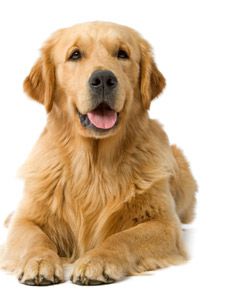
Top stories


LegalCape Town estate agent dupes seller in elaborate property scam, court intervenes
Anelisa Zungu and Renel Fourie 18 hours




More news



They come in all shapes and sizes, some round, some square and some rather interesting. So, what is up with the shape of kibbles? Canine and feline health nutrition manufacturers and distributors Royal Canin® offers some insight into kibble shapes.

Kibble shapes, especially in breed-specific health nutrition, are specifically tailored for each breed. Royal Canin® has developed kibbles from extensive research into the specific eating characteristics of different canine and feline breeds. Advanced equipment has been commissioned to aid the development of kibbles in the Royal Canin® factory in France.
According to Royal Canin South Africa marketing manager, Tarryn Day, a Texturometer helps test specifically shaped and textured kibbles, including different crushing pressures by each breed’s tooth, to meet the physiological needs of different breeds’ and their ability to ingest and chew. What this means is that the kibble density is tested against the penetration of a typical tooth of a specific breed to determine the kibble’s breaking strain and density to also aid the brushing effect on the tooth.
“Kibble design supports optimal health in cats and dogs,” says Day, “as much as the nutrients it contains. Kibble design addresses the ease of grasping the food (especially if the breed is brachycephalic (has a flat face) and chewing actions, ingestion speed, and overall health of each breed of cat and dog.”
There are a myriad of breeds and each pick up and chew their food differently. Siamese cats use their long eye teeth to ‘spear’ up their food and eat very fast, Persians use the underside of their tongues to attach the food and flick it back into their mouths and Boxers and Bulldogs have unique brachycephalic jaws making it very difficult for them to pick up and chew kibbles.

Day continues, “Kibbles are specifically designed to encourage chewing, slow ingestion rates and aid dental health. Speed of ingestion can be dangerous as it increases risks of bloating, choking, regurgitation and inadequate digestion. In the case of brachycephalic jaws, the unique wave-shape of the kibble is critical to assist ingestion.”
Royal Canin® has always believed size is important in health nutrition development. Their size health nutrition range was a revolutionary introduction to the market so many years ago. In the case of kibble size, the size of the dog or cat has a direct impact on the size of the kibble needed to match breed physiologies. “This is easy to understand,” says Day, “small dogs, small and softer kibbles, big dogs, bigger and tougher kibbles.”
Kibbles impact many things:
You thought that kibble shape has something to do with marketing, right? Wrong, think again. Kibbles are designed with the health of your pet in mind. So, if they are wave-shaped, round, elongated, doughnut shaped, triangular or square, you can be sure that research indicates these are the right shape and texture for your breed or type of dog.
Royal Canin® is a global pet nutrition company that focusses on highly digestible, highly palatable and specific diets for cats and dogs. Royal Canin provides nutritional solutions for each pet including a full range of prescription foods for those pets with veterinary-diagnosed ailments and diseases. A member of the Pet Food Industry of South Africa (PFI), Royal Canin® is represented globally in many countries on their pet food forums and is active in helping to raise the quality and food safety standards worldwide.
For more information on any Royal Canin® canine or feline health nutrition solutions, contact them on 0860 630 063 or email moc.ninaclayor@ofni.